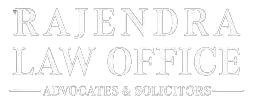The Supreme Court on Wednesday (May 8th) delivered a significant judgment regarding witness testimony in criminal trials. The bench, comprising Justices BR Gavai and Sandeep Mehta, ruled that a prosecution witness’s evidence cannot be automatically disregarded simply because the prosecution deemed them hostile and cross-examined them. Supreme Court Upholds Conviction Despite Hostile Prosecution Witness Key Points of the Judgment: Impact of the Judgment: Firstly, This judgment clarifies the use of witness testimony in criminal trials. While acknowledging the potential for witness manipulation, the Court allows for the use of reliable portions of such testimonies when supported by other evidence. Case Details: Read More
News Tags: How does the Supreme Court differentiate between a witness who is genuinely mistaken and one who is intentionally hostile?
1 post
The Supreme Court doesn’t issue a definitive checklist to differentiate between a mistaken and a hostile witness. However, their rulings consider several factors to assess witness credibility:
- Prior statements: If a witness’s current testimony contradicts previous statements they made under oath (written or recorded), it can cast doubt on their current version and suggest intentionality.
- Demeanor: Evasive answers, combativeness, or excessive hesitation during questioning might indicate a witness is deliberately trying to hinder the proceedings.
- Motivation: The court may consider if the witness has a personal connection to the defendant or the case that could influence their testimony.
- Corroborating evidence: If other evidence, like physical evidence or witness testimonies, aligns with the initially reported version of the mistaken witness, it strengthens their credibility.
These factors aren’t absolute, and the court considers the situation in its entirety. A witness might be genuinely mistaken due to poor memory, while another might be intentionally hostile due to fear or intimidation.

